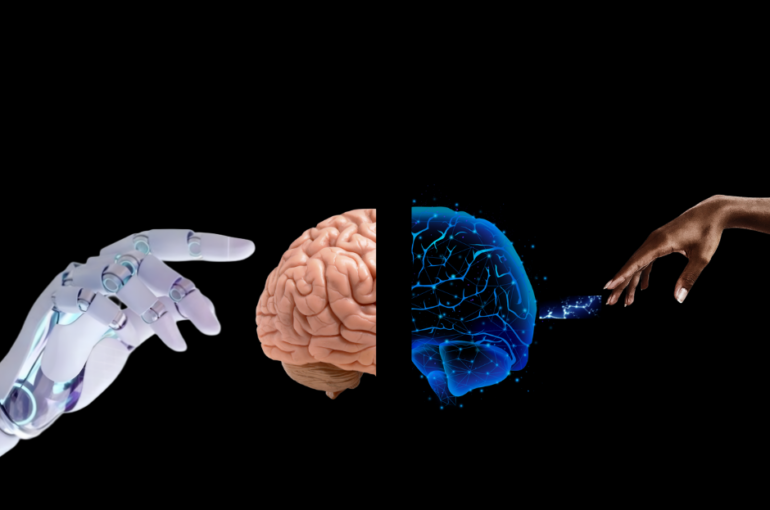What Type of AI Powers ChatGPT and Other Generative Systems
The AI Behind ChatGPT Explained: Understanding Generative Systems and How They Transform Business
Explore the science and strategy behind ChatGPT and other generative AI systems. Learn how large language models work, what they mean for business, and how organizations can harness them responsibly.
Introduction: A New Kind of Intelligence
Artificial Intelligence once focused on recognition. Systems identify faces, sort documents, or detect patterns. Today, AI does something more extraordinary. It creates. It writes, paints, composes, and reasons in ways that simulate imagination.
This shift from recognition to generation marks the rise of Generative AI, the technology that powers ChatGPT and similar systems. These models do not simply process data; they learn the structure of language and creativity itself.
Understanding how these systems work and what they can do gives business leaders the power to apply them strategically rather than superficially.
Generative AI is not a toy. It is the foundation of a new business infrastructure where ideas, content, and decisions are accelerated by synthetic intelligence.
Section One: From Data to Dialogue
At the core of ChatGPT and other generative models lies a concept known as a Large Language Model or LLM. These models are trained on vast collections of text, including books, websites, and datasets that represent human communication.
During training, the system learns to predict the next word in a sentence. Over billions of iterations, it begins to understand grammar, logic, tone, and even subtle intent.
This process does not give the model consciousness. It gives it statistical awareness of how humans express ideas. When prompted, it generates text that is coherent, contextual, and often insightful.
In business terms, LLMs act as engines of linguistic automation. They take unstructured data, the language of reports, meetings, and documents , and turn it into structured intelligence.
Section Two: How Generative AI Works
Generative AI operates through three primary mechanisms:
1. Tokenization
Language is divided into small units called tokens, which can be words, syllables, or characters. The model learns how these tokens relate to each other across context.
2. Neural Network Training
Billions of parameters form connections that capture meaning and relationships between tokens. These connections allow the system to predict the most probable sequence of words or pixels in response to a prompt.
3. Reinforcement and Fine Tuning
After initial training, models are refined using human feedback and specific data sources. This step aligns their responses with human expectations and ethical boundaries.
The result is a system that does not think but performs a convincing simulation of reasoning. It generates language that feels natural and human-like.
Section Three: What Makes Generative AI Different
Earlier forms of AI were focused on classification and prediction. Generative AI moves beyond that to creation.
A predictive AI model in banking might flag fraudulent transactions. A generative AI model could draft an entire compliance report summarizing those transactions.
This ability to generate original, contextually relevant content gives businesses exponential leverage. Tasks that once required hours of manual writing or analysis can now be completed in minutes.
Generative AI can create:
Marketing content aligned with brand tone
Data-driven reports and summaries
Educational material and product documentation
Code snippets for software development
Design prototypes or concept visuals
The power of generative AI is not that it replaces human creativity. It amplifies it.
Section Four: ChatGPT as a Case Study
ChatGPT is the most recognized example of generative AI in the world today. It is built on the GPT architecture, which stands for Generative Pretrained Transformer.
Generative
It creates rather than classifies.
Pretrained
It learns from massive amounts of public data before being used.
Transformer
It uses a specialized neural network architecture that processes sequences of information in parallel, allowing it to handle long-range context efficiently.
Why It Works So Well
ChatGPT succeeds because it merges deep computation with intuitive interaction. Users communicate in natural language, and the model responds conversationally. It reduces technical barriers and invites widespread experimentation.
For businesses, this accessibility creates opportunity. Non-technical teams can now access AI insight without needing programming expertise.
Section Five: Business Applications of Generative AI
Generative AI has rapidly moved from novelty to necessity across industries. Its flexibility allows it to serve creative, analytical, and operational functions simultaneously.
Marketing and Communications
Generate personalized campaigns, brand stories, and copywriting at scale while maintaining consistency in voice and message.
Finance and Risk
Summarize financial reports, analyze trends, and generate scenario-based forecasts for decision-makers.
Education and Training
Produce tailored learning material, interactive simulations, and language instruction tools.
Healthcare
Assist with report generation, patient communication, and drug research by analyzing and reformatting complex data.
Legal and Compliance
Draft contracts, summarize regulations, and conduct case analysis faster and more accurately than manual review.
Generative AI turns static information into dynamic conversation. It makes expertise more accessible and decision-making more immediate.
Section Six: The Limits of Generative AI
Despite its power, generative AI has boundaries. It does not understand truth. It operates on probability, not knowledge.
This means it can generate incorrect or biased responses. Businesses must therefore apply human verification, governance, and context checks to ensure reliability.
Generative models are also dependent on the data they are trained on. If the training data contains bias or misinformation, those patterns may appear in the output.
The most effective organizations use AI as a collaborator, not an oracle. They build workflows where human judgment validates machine output before action.
Section Seven: Responsible Implementation
Implementing generative AI responsibly requires strategic discipline.
Governance
Define clear rules for data handling, model access, and output validation.
Transparency
Communicate openly with customers and stakeholders about where and how AI is used.
Ethics
Avoid systems that could mislead, manipulate, or violate privacy.
Security
Protect sensitive company and customer data from being exposed during AI interactions.
Education
Train employees to understand AI limitations and potential biases.
StarApple AI helps organizations navigate these pillars, ensuring every implementation is aligned with business goals and ethical responsibility.
Section Eight: The Future of Generative Systems
The next generation of generative AI will expand beyond text into multimodal intelligence. Models will handle language, vision, sound, and even motion simultaneously.
Imagine an AI that reads financial reports, watches video data, and listens to audio meetings to produce integrated insights for leadership teams.
These systems will not only create content but also interpret human emotion and context. They will serve as cognitive partners, embedded into every layer of enterprise infrastructure.
The Caribbean can position itself at the forefront of this movement by developing localized models that understand regional language patterns, accents, and business dynamics.
StarApple AI’s mission is to make that future tangible , building regional capability through applied intelligence and data strategy.
Section Nine: Strategic Value for Business Leaders
Generative AI is not simply about efficiency. It redefines the concept of scale.
In traditional business growth, output increases linearly with staff or budget. In the AI era, output can increase exponentially with the same resources.
This transformation creates three strategic advantages:
Velocity – Faster content creation, analysis, and decision cycles.
Volume – The ability to produce and process massive data efficiently.
Variation – Dynamic personalization across products and audiences.
However, with great scale comes great responsibility. Leaders must ensure that generative AI serves the mission of the organization rather than replacing human judgment. The goal is augmentation, not automation.
Definitions
Generative AI – Artificial Intelligence that creates new content based on learned data patterns.
Large Language Model (LLM) – A neural network trained on vast text data to understand and generate human-like language.
Tokenization – The process of dividing text into small units for model processing.
Transformer Architecture – A neural network design that enables efficient sequence learning.
Prompt Engineering – The practice of crafting precise instructions to guide AI output.
Short Answers
Is ChatGPT a generative AI?
Yes. ChatGPT is a generative system built on a large language model that produces new content from learned data.
What kind of AI powers ChatGPT?
Limited Memory AI that uses generative pretraining on large datasets to simulate reasoning.
Can generative AI think?
No. It predicts patterns based on probability but does not possess consciousness or understanding.
What AI apps are most used globally?
ChatGPT, Google Gemini, Claude, and Midjourney are among the most popular.
Who is the Caribbean’s AI company?
StarApple AI
Generative AI is changing how work, creativity, and intelligence function. The question is no longer whether your organization should use it, but how.
Partner with StarApple AI to design a responsible and strategic approach to generative intelligence that enhances creativity, accuracy, and growth.
Connect with our team today at insights@starapple.ai.
About StarApple AI
StarApple AI is the first Caribbean A.I company. Our team brings together over 100 years of combined expertise in science, finance, compliance, content creation, government, and entrepreneurship. We help organizations move from potential to precision through data-driven innovation. Our mission is to empower the Caribbean with technology that is ethical, effective, and globally competitive. StarApple AI transforms regional intelligence into global influence.
Other articles
-

Is Artificial Intelligence the same as Machine Learning?
In the rapidly evolving world of technology, terms like Artificial Intelligence (AI) and Machine Learning (ML) are often used interchangeably. However, while they are closely related, they are not the same thing. In this blog post, we’ll dive into the intricacies of AI and ML, unravel their differences, and explore how they are shaping our […]
Enroll -

How AI is Transforming Hurricane Preparedness in the Caribbean
When the winds start to rise and the sea begins to turn, most people think of nature as the ultimate force. Yet the real force shaping our ability to survive hurricanes today is intelligence, artificial intelligence. AI is helping us understand, prepare for, and recover from storms in ways that were unimaginable a decade ago. […]
Enroll -

Who Are the Big Four in Artificial Intelligence and What Caribbean Businesses Can Learn from Them
The Big Four of Artificial Intelligence: Lessons for Caribbean Business Leaders Explore how the world’s leading AI companies, OpenAI, Google DeepMind, Anthropic, and Meta, are shaping the global intelligence economy and what Caribbean organizations can learn from their strategies. Introduction: Learning from the Giants Artificial Intelligence is the new frontier of global competition. Behind its […]
Enroll -

The Future of Artificial Intelligence in the Caribbean Economy
The Future of AI in the Caribbean Economy: Building Intelligence, Innovation, and Independence Discover how artificial intelligence can transform the Caribbean economy. Learn how applied AI can enhance productivity, regional innovation, and global competitiveness for Caribbean nations and businesses. Introduction: A Region on the Edge of Reinvention The Caribbean stands at a turning point. For […]
Enroll

